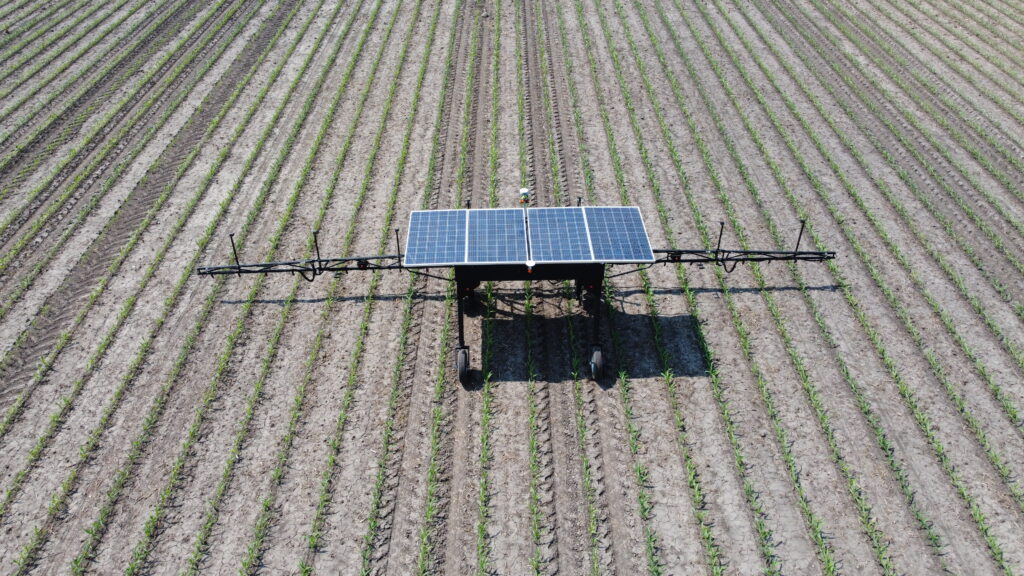Solinftec unveils robot sprayer to identify weeds and pests
 © Solix
© Solix A new spraying robot capable of identifying weeds, pests, disease and nutrient deficiencies is now available to North American farmers.
The Solix Sprayer is the brainchild of a small team of Cuban automation engineers who set up shop in Brazil 17 years ago with the goal of developing autonomous machines to scout crops.
Having achieved this, five years ago the company, Solinftec, started out on a more ambitious project to develop a robot capable of dealing with the issues it detects.
See also: Spot spraying option coming to John Deere’s trailed R-series
Over the last few growing seasons a number of prototypes have been out working on farms across the Midwest and Canada.
Production models started rolling off the company’s Indiana production line earlier this year.
Broadacre applications
The Solix is a high-clearance machine designed to work in broadacre crops such as cereals, maize, soya, sugarcane and cotton.
Equipped with a 12m (40ft) boom, it can apparently cover between 20 and 32ha per day; the company says each $50,000 (£40,000) unit can comfortably look after 160ha in any given season.
Eight cameras along the boom are employed to identify weeds and prompt the sprayer controller to instantaneously apply a dose of herbicide to the target plant.
Working in cereals and maize, it is able to discern grass weeds from crop plants and, likewise, in broad-leafed crops such as soya and sunflowers.
In the background, a further bank of cameras is used to scout the field, collecting plant population counts and germination scores and making assessments of crop health and nutrient status.
This relies on a system that uses visual recognition, in combination with red- and near infrared spectrometry, to identify specific diseases, pests and deficiencies.
The information can then be used to determine threshold treatment levels.
The theory is that, in future, the machine will be able to then select the correct product and apply that to the target, but that’s still a concept in development.
Less chemical use
To date, the solar-powered automaton has been used solely to apply herbicide.
In a spot-spraying role growers are reported to have seen a 97% reduction in chemical usage when compared to blanket applications.
The goal is to achieve similar savings in insecticide use and, to do that, Solinftec has an interesting pest control robot in its armoury.
As well as gathering data on crop health status, the Hunter, which works at night, uses specific wavelengths of light to attract particular insect pests.
Once drawn to the machine, target invertebrates are eradicated by electrocution – much like the ubiquitous neon fly-zappers often found dangling from farmhouse kitchen ceilings.
With all power generated by solar panels during the day, the company says it would make sense to integrate this technology into the Solix Sprayer, making it a true multitasker.

